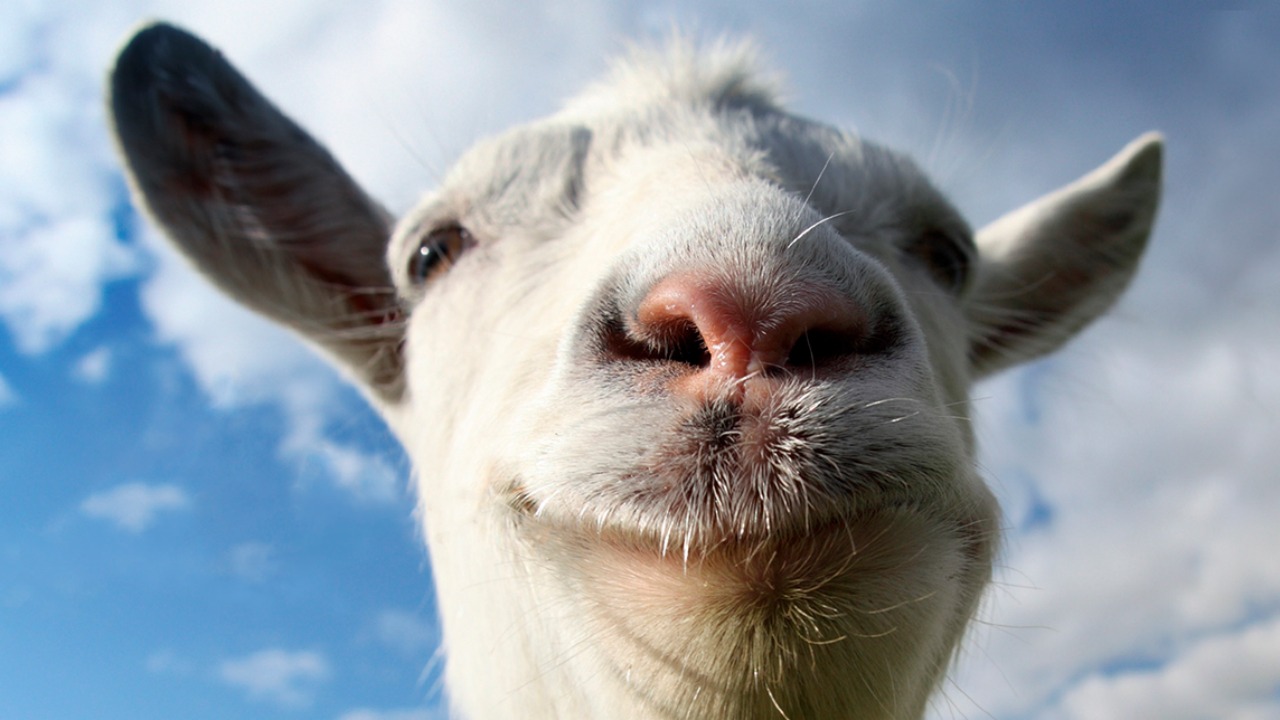
Goats are herbivorous artiodactyls-eventoed
ungulates-of the family Bovidae, genus
Capra, which usually have hooves and hollow
horns. They are also ruminants, chewing and
swallowing food, regurgitating it, and chewing
and swallowing it again. This cud chewing allows
them to get the most nutrients possible from the
low-quality foods they eat.
Wild goats are mountain dwellers, adept at
leaping between rocks, sure-footed due to their
hoofs. The hoofs have a hard outer layer and a
softer, inner layer that wears away quickly and
leaves hard edges useful for climbing. Domesticated
goats, raised for milk, meat, and leather,
retain many of these characteristics. Swiss goats,
the most common domesticated variety, have
pointy ears and horns, while Nubians are hornless.
Physical Characteristics of Goats
Most adult goats weigh up to 125 pounds. They
are not as large as sheep, which they resemble.
Their horns are twisted flat and turn backward.
Their hoofs are divided in two (cloven). Males are
called rams or billies, while females are called
does or nannies. Males emit strong odors during
mating season. Males and most females have chin
beards, leading to the name "goatee" for the similar
style of facial hair in men. Goats are normally
covered with straight hair, but some grow wool,
such as angora goats. Their coats are red, brown,
tan, or white. Goats find enough to eat on poor,
dry land where horses, cows, and sheep would
starve. Adult female goats reach lengths of 2.5 to
3.5 feet and are approximately 4 feet at the shoulder;
they weigh between 100 and 120 pounds.
Males are 20 percent larger and heavier than females
and have longer horns.
Domesticated goats derive from ten wild goat
species. They live on hills and mountains and are
either goat antelope or true goats. All except the
Rocky Mountain goat inhabit Europe and the
Asian Himalayas. Rocky Mountain goats and
chamois are goat antelope, having physical characteristics
of both goats and antelope.
Types of Goats
Rocky Mountain goats are goat antelope inhabiting
mountains from the American Northwest to
Alaska. They live in snowy, craggy habitats and
are excellent climbers, due to hoofs having soft
pads with hard rims that work well on snow, ice,
or rock. Rocky Mountain goats are about three
feet tall at the shoulder, with black horns, white,
shaggy pelage, and goatees. They eat any plants
available and are solitary, except during mating.
Chamois goat antelope have light brown pelage
in the summer, which turns dark in winter. The
males' deadly curved horns are eight inches long.
Chamois are about the same size as Rocky Mountain
goats and have similar hoofs. They live above
mountain tree lines in Europe, Asia, and New
Zealand and prefer eating grass and lichens. During
winter, they eat pine needles and bark. Females
form herds of up to one hundred, while males live
alone except to mate. Chamois battle for mates,
and defeated males often die after their belly and
throat are ripped open by the victor's horns.
Angora goats, true goats, have body shapes
like domesticated Swiss goats. They inhabit Turkey,
South Africa, the United States, Argentina,
Australia, andNewZealand. Horned and bearded,
their long, thick, hair is used in mohair cloth. Angora
goats grow approximately 80 percent of the
size of Rocky Mountain goats. They live on hillsides,
eating woody vegetation and grass.
Nubian goats, hornless true goats, have short
hair and droopy ears, and the males have goatees.
Adult males weigh up to 180 pounds, while females
weigh up to 140 pounds. Males are about
five feet tall at the shoulder. Their coats are black,
tan, or red, sometimes with white spots. They eat
briars, thistles, and brambles, as needed, with
their tough mouths and teeth. Their splayed
hooves aid climbing hills. Nubians live in large
herds and males fight for mates.
Goat Life
Goats prefer eating leaves and grass, but can eat
thistles, briars, and brambles with their tough
mouths and teeth. Thus, they can survive where
soft vegetation is scarce and other herbivores
starve. Goats are sociable and live in groups of
from a dozen to thousands of individuals.
In the wild, males fight for mates and may die
in such battles. Mating usually occurs in the
spring among domesticated goats, while wild
goats generally mate in the fall. The goat gestation
period is about 5.5 months and yields one to four
young, nursed for six months. Young goats are
born with hair, eyes open, and can run and jump
within twelve hours of birth. Goats can live for
fourteen to twenty years.
A number of goat breeds are raised for meat,
milk, leather. Goats are fine milk producers, and
the milk is often used to make cheese. Their milk is
sweet, nourishing, and easy to digest. It also has
more fat and protein than cow milk and is helpful
to persons with digestive troubles. More people
throughout the world use goat milk than cow milk.
Toggenburg and Saanen Swiss goat imports are
popular milk goats in the United States. Toggenburgs
are brown, with light side stripes, while Saanens
are short-haired and white or cream-colored;
both breeds produce around five quarts of milk
per day. Goatskins also make high-grade leather;
for instance, "Morocco leather" is chamois skin.
Angora and cashmere goats are raised for their
coats, which are used to make wool.
Goat Facts
Classification:
Kingdom: Animalia
Subkingdom: Bilateria
Phylum: Chordata
Subphylum: Vertebrata
Class: Mammalia
Order: Artiodactyla
Family: Bovidae
Subfamily: Caprinae
Tribes: Rupicaprini (four genera, five species);
Ovibonini (two genera, two species); Caprini
(five genera, seventeen species)
Geographical location: Asia, Europe, North
America, Africa, New Zealand, Australia
Habitat: Dry mountains or hills
Gestational period: Around 5.5 months
Life span: Fourteen to twenty years
Special anatomy: Permanent, hollow horns, ruminant
stomach, very tough hooves
Other popular Animals
Photo Gallery of - Goat
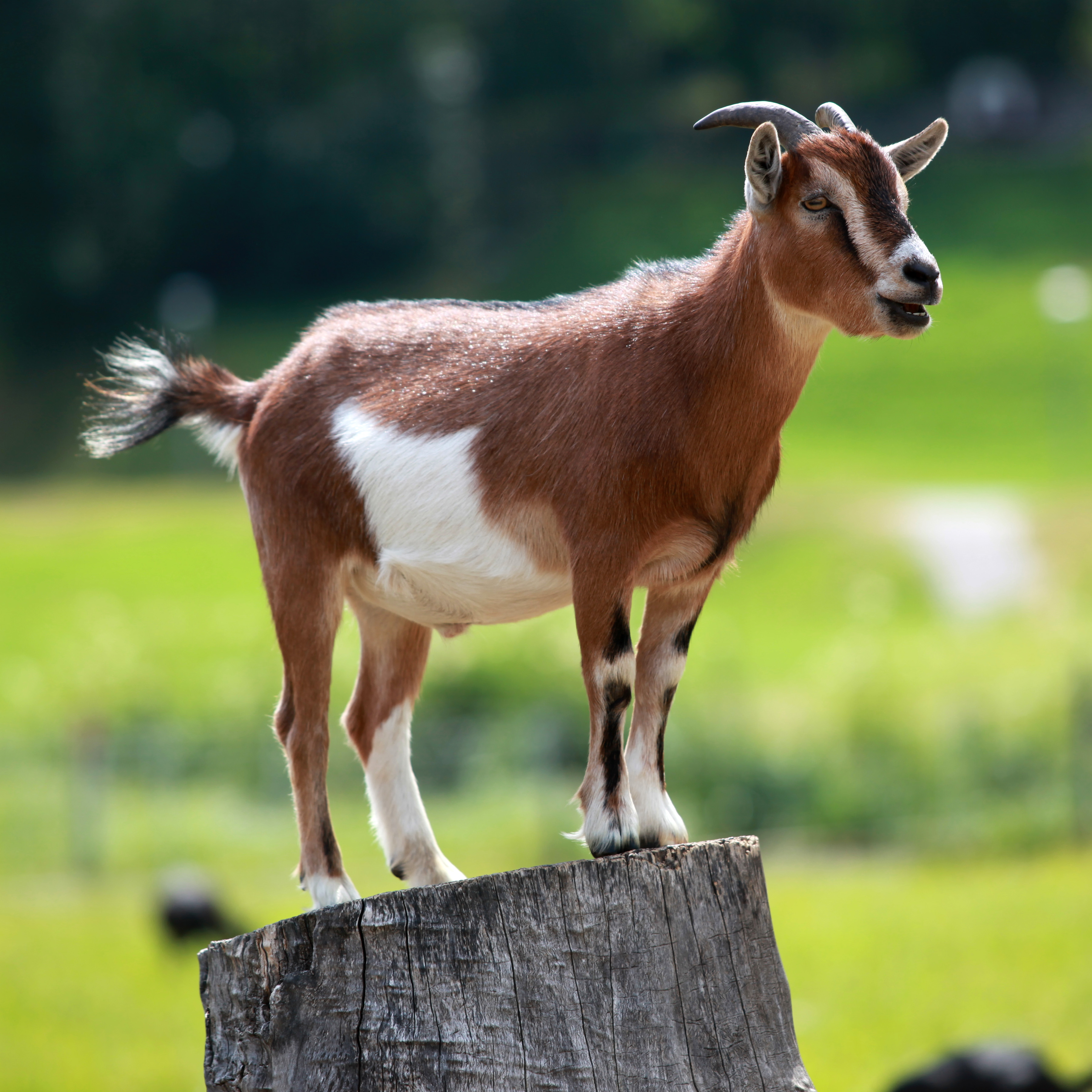

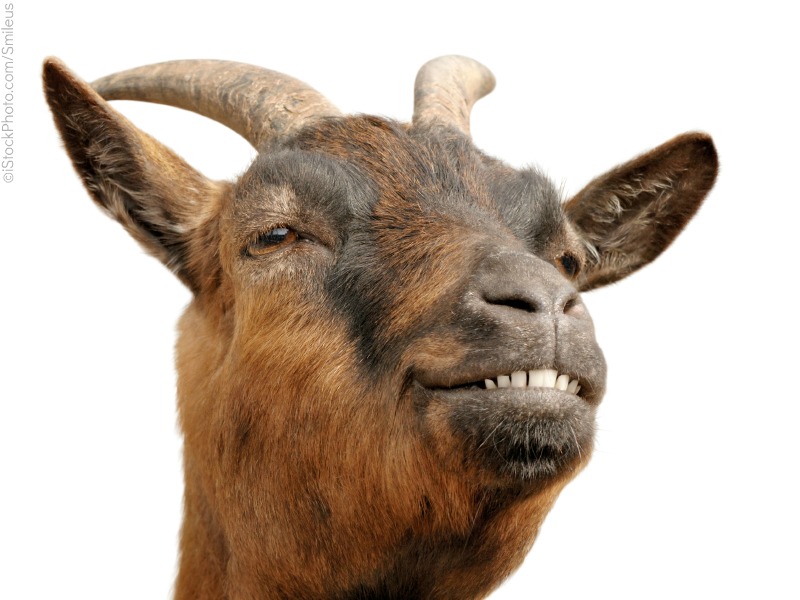

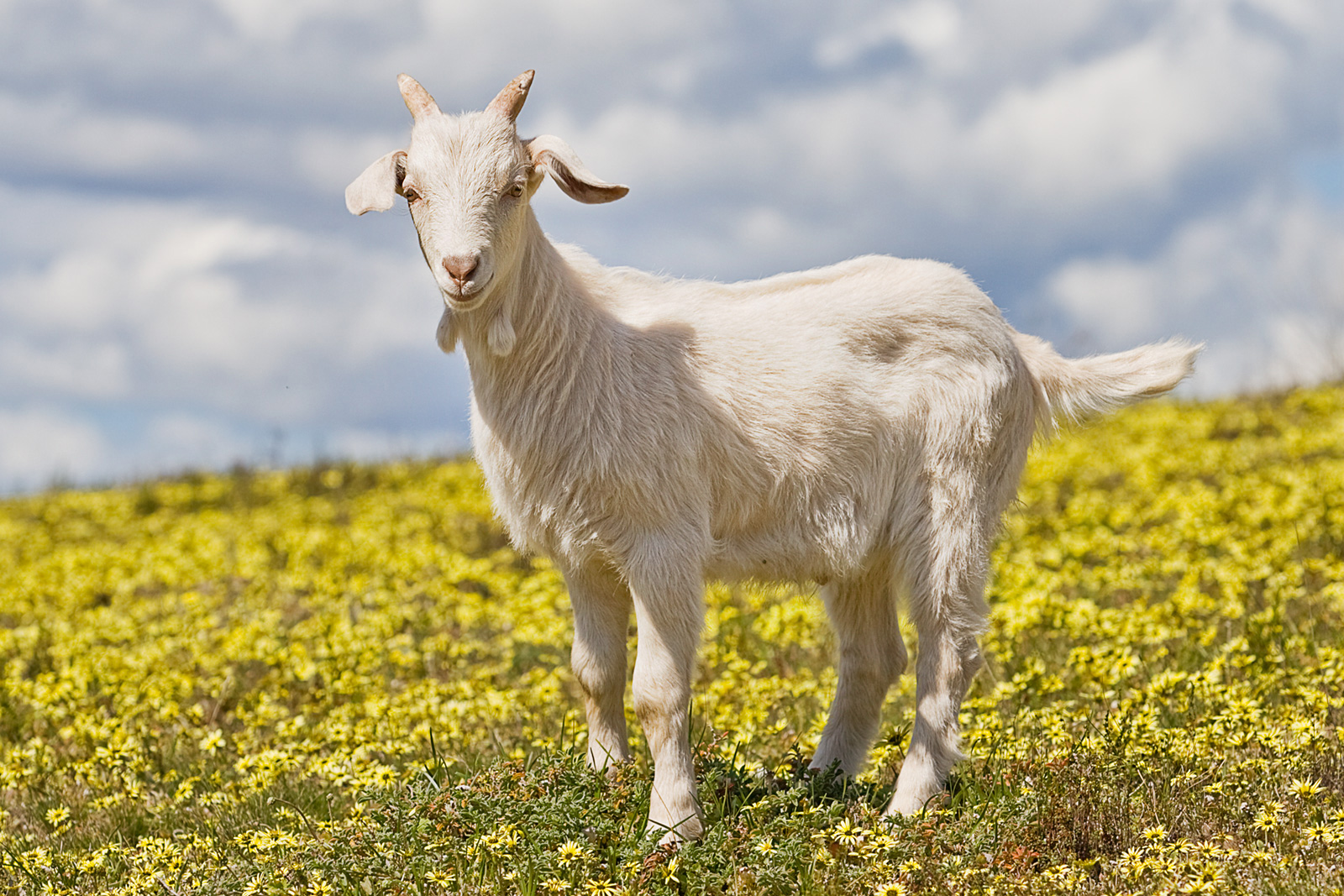
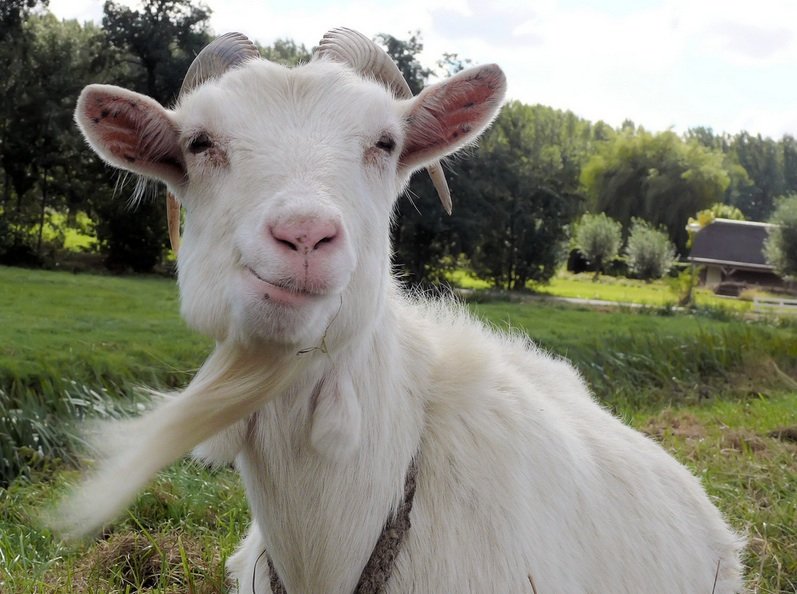


 Animalia Life
Animalia Life